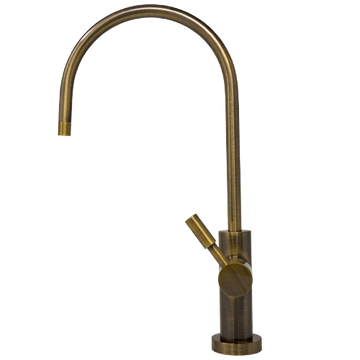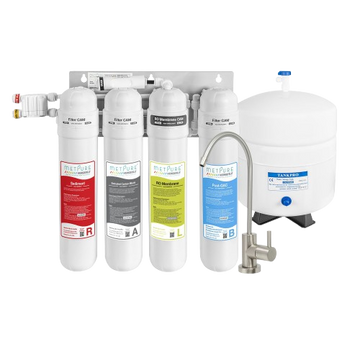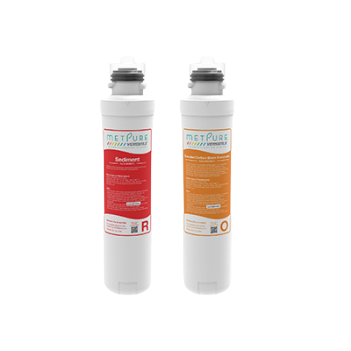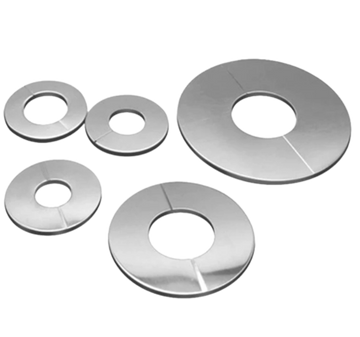PEX is growing in popularity for plumbing uses now, thanks to its high flexibility and resistance to corrosion. Metpure offers a range of PEX fittings, each suitable for different uses around the property.
What is PEX Tubing? All You Need To Know About PEX Pipes
PEX is another name for cross-linked polyethylene, a material used in plumbing. It's a flexible plastic-based alternative to copper and steel pipes. If you're moving into a new construction or doing remodeling, you probably will have PEX pipes in your home. They're usually blue, red, or gray in color, but others might be present.
PEX polyethylene pipes are NSF/ANSI/and CAN 61-certified, following health safety standards. It can be used in transporting potable water, as it's BPA and lead-free. The plastic also doesn't leech into your drinking water, so you don't have to worry about microplastics. Check all pex tubings.
PEX Pipe Size, Color, and Use Guide
PEX comes in a range of lengths, from short 10-foot connections to 1000-foot rolls for the whole house. PEX diameters range from 1/4th inch to 1 inch- the greater the diameter, the better it is for pumping large water volumes.
PEX piping comes in a color range so you can denote and separate your plumbing lines. Pre-installed PEX pipes in residential spaces usually use red and blue colors to highlight hot and cold water supply each. White and grey piping is used for both.

PEX can be used freely around the house, granted you have the right length and diameter of the pipe for your needs. PEX installation doesn't require soldering, and the material is more prone to freezing, cracking, and corroding. PEX also allows water to flow silently, and even sediment won't cause banging noises.
However, you should keep in mind that PEX isn't suitable for outdoor fixtures. PEX can break down under UV light, cracking in a couple of months only.
PEX-A vs. PEX-B; What’s The Difference?
When you're looking at PEX plumbing online, you're likely to find two grades- PEX A & B.
PEX A is the more common one, suitable for all home usage, and has the most flexibility. It's highly resistant to cracking but is the more expensive option. PEX B trades in some of that cost for lower flexibility, but it's better at handling highly chlorinated water.
How To Connect PEX Piping
Of course, there's no layout where a 1000-foot-long PEX pipe can be installed everywhere without any junctions. Here's where PEX connecting tools come in.
PEX A pipe normally needs an expansion-style fitting and an expansion tool. Metpure’s 2-inch PEX A Expansion PPSU Black Polyphenylsulfone Coupling works excellent here. It’s made of durable materials and can create a watertight seal between pipes in seconds.
The expansion is attached to one end of a sleeve, while the other sleeve slides over. As the material is expandable, it will try and return to its original size, snugging your connection tightly. If that process takes too long, you can also a heat gun to speed up adhesing. Crimping can be done to reinforce the pipes.
PEX B requires an insert-style fitting, which is placed in the pipe and fastened by either crimping or clamping exteriorly. While they're easier to install, they often downsize your pipe and cause more water flow resistance, which lowers overall pressure.
Crimping is the preferred method to connect PEX. It requires crimping rings and a crimping tool. The ring, usually made of copper, slides over the end of the tube just above the fitting. The tool snugs the ring tightly in place.
If you have PEX pipes that need to crimp together, try out our PEX B Crimp Tool Kit. It’s a complete kit with 4 jaws, fasteners, and 3/8"-1" crimping copper rings, perfect for a quick DIY.
The other method of joining PEX is using a clamping tool on stainless steel rings placed around the PEX connections. It’s similar to crimping, but you use a ratchet clamping tool to squeeze the ring tightly. Check out Metpure’s PEX B Pipe Ratchet Cinch Clamp Tool. It comes with varying steel ring sizes to match your system.
NSF-Certified 3/8" LLDPE Tube- 500 FT

If you’re looking for a PEX water line set, we recommend the 3/8-inch LLDPE tube. It’s NSF-certified and uses food-grade materials, perfect for water filters and use around the house. The 3/8-inch diameter makes it a perfect candidate for hot water lines, especially to kitchens and showers.
NSF-Certified 1/4" LLDPE Tube- 1000 FT

The NSF-certified 1/4-inch LLDPE tube is a staple for multiple plumbing uses. You can use it to run a line to the refrigerator, water dispenser, and other appliances. It can be installed underground for irrigation as well, thanks to a high-temp and chemical resilience. The pack comes with a spool, which you can use to change the water flow too.
LLDPE 1/4" Tube 25-Foot Roll (Multicolor)

Designed for water filtration systems, icemakers, and daily appliances, the 25-foot LLDPE tubing roll used NSF-certified PEX. It has a 1/4-inch outer diameter and comes packaged in a retail bag in 4 color options. It’s made of food-grade polyethylene for the safe transfer of drinking water and can handle harsh pressures without cracking. The colors are exact replicas of piping in our RO filter systems, so it’s your go-to replacement option.














